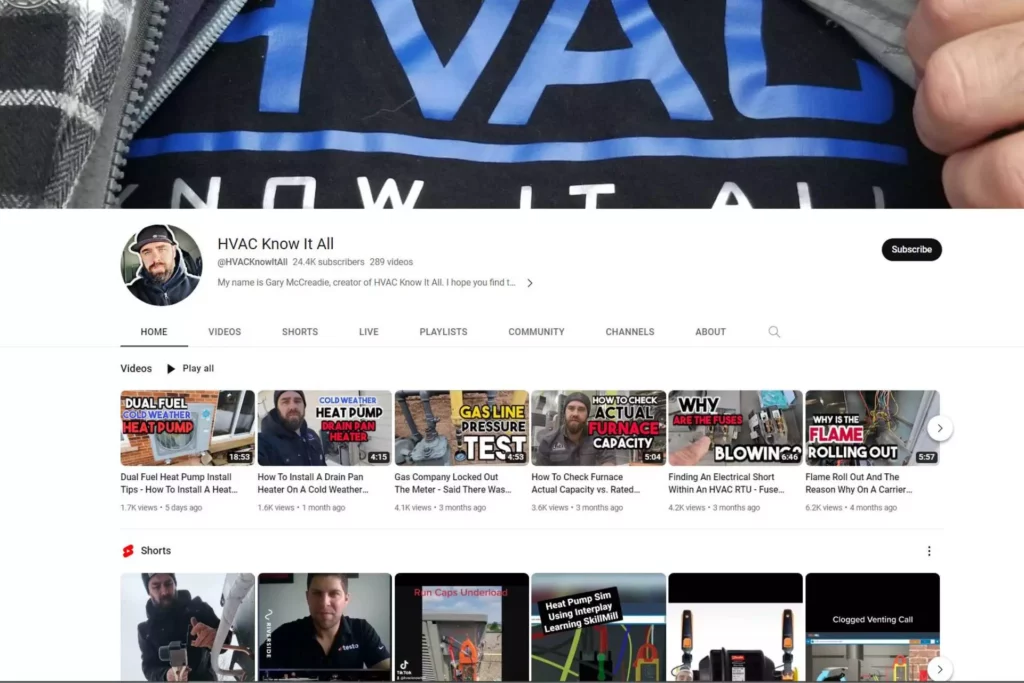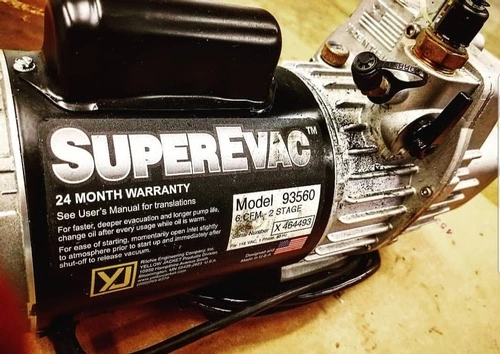Non Condensable Gases in a Refrigeration System
Most of my hard core learning came in the early days of my career.
I was thrown into many situations I probably had no business being involved in and like most young apprentices, there were more than a few royal f@#k ups.
I remember vividly, my first encounter with non condensables in a system, and you guessed it, I put them there or, more accurately, failed to remove them.
The Job
We were installing a 5 ton Liebert Challenger for a small server room.
The condenser was outfitted with an OROA flood back control to build condenser pressure in low ambient conditions.
The job went well for the most part, but it did include a fall from a ladder, a compound fracture, a hospital visit, and a fusible plug that was accidentally torched that melted the solder within it, but those stories are for another day.
On the lighter side, myself, Carlos, and Mike were the install crew, and when I told the boss about the fusible plug incident, he asked who torched it.
Growing up with the phrase, “Snitches get stitches”, I told him I’d rather not say.
But, like most bosses, he demanded to know. My response was, “Well, it wasn’t me or Carlos”.
Technically speaking, I fed Mike to the wolves, but I never mentioned his name once!
The Start Up
We were on the back nine approaching the 18th hole (evacuation of the system).
After pulling a vacuum overnight we added a holding charge, pounding liquid into the liquid line until the system stopped accepting it.
he power supply was checked and verified as correct.
Upon initial start-up, instantaneous high-pressure fault, and no, it wasn’t a faulty pressure switch.
The pressure was actually 400 psi plus on the R22 system.
After a few hours of this and that, I finally made the call to the office. I needed some help.
The Grumpy Senior Tech
The grumpiest, but smartest of the bunch “super tech” showed up, and I was thankful because I knew he would get the situation sorted out.
After an hour or so of surveying the site and installation, he went straight to the condenser mounted on the roof, stuck a hose on the service fitting at the highest location, and blew off about 30 seconds’ worth of gas (which I am not recommending anyone do).
We went back down to the indoor unit and started it up.
No longer did it instantly pop the pressure control. It ran…but not so well.
He explained to me that there was air still in the system (non-condensables).
I was dumbfounded because of our 14-hour evacuation.
It turns out that on a system with a flood back control and liquid line solenoid valve, we must energize the solenoid during evacuation…
If not, we will be unable to remove the air trapped between the two devices.
The entire charge was removed, and the evacuation was executed once more with the solenoid energized.
A fresh batch of R22 was charged into the system, and we called it a day….A long day!
What Are Non Condensables?
Non condensables are gases such as air or nitrogen that can not be condensed during the refrigeration cycle.
They move into the condenser and cause issues within a system, but lucky for us, those issues have symptoms.
Symptoms Of Non Condensables
We talked about the elevated discharge pressure, and this is due to the fact that the non-condensables are talking up needed space within the condenser coil.
The elevated pressure in the condenser will cause higher-than-normal compression ratios as well.
Due to the increased condenser pressure and saturated condensing temperatures, the condenser temperature difference or condenser split will also be high (difference between condensing temperature and ambient temperature).
Other things to look for…
Possible increase of suction pressure, high compressor amp draw and higher than normal subcooling.
Use best practice evacuation procedures to ensure all non condensables are removed for a healthy operating system.
Some lessons can’t be learned from books.
You must breathe in the mistakes and embrace them as learning experiences.
Finally!

Check out the link to my YouTube channel for more tips, tricks, and troubleshooting videos, and check out The HVAC Know It All podcast here or on your favorite podcast app.
Happy HVACing!


